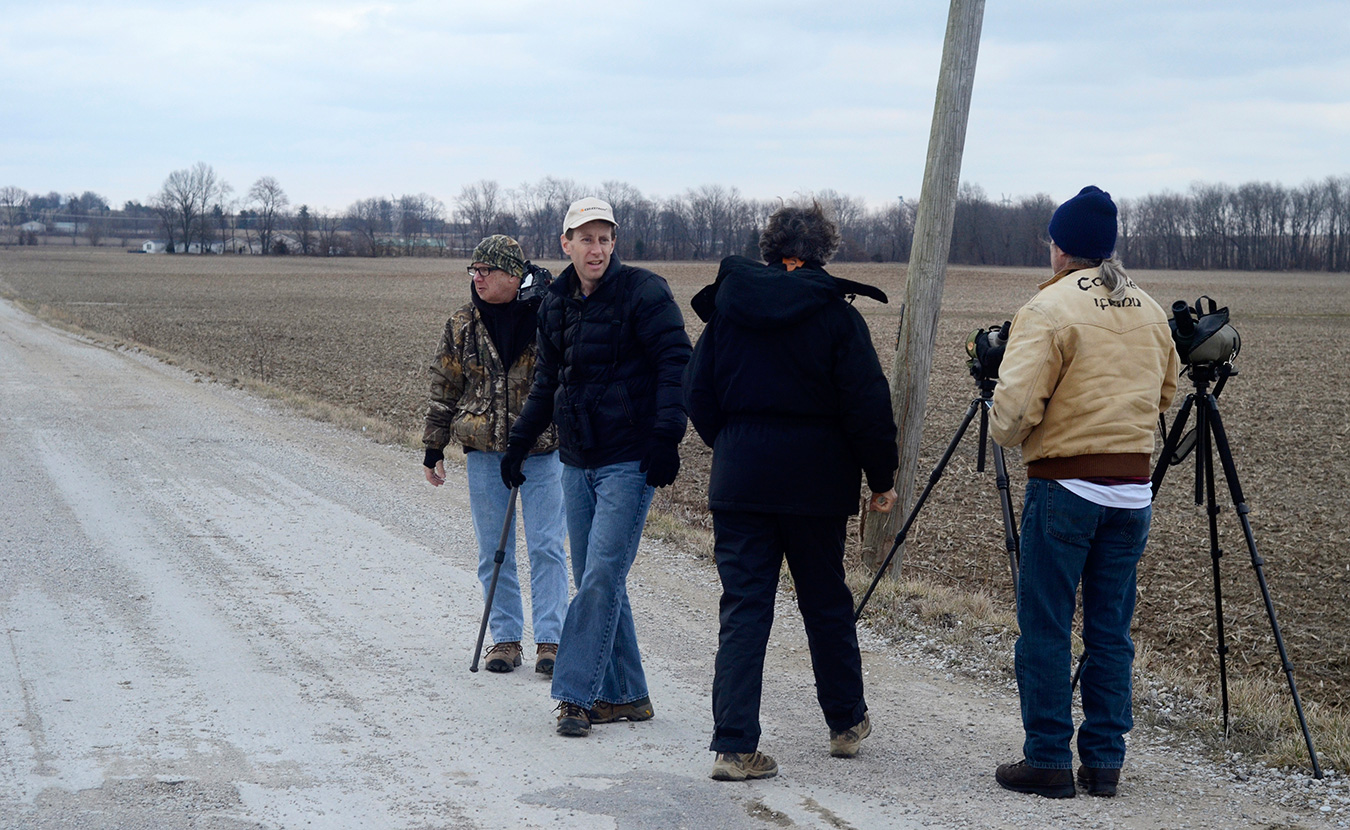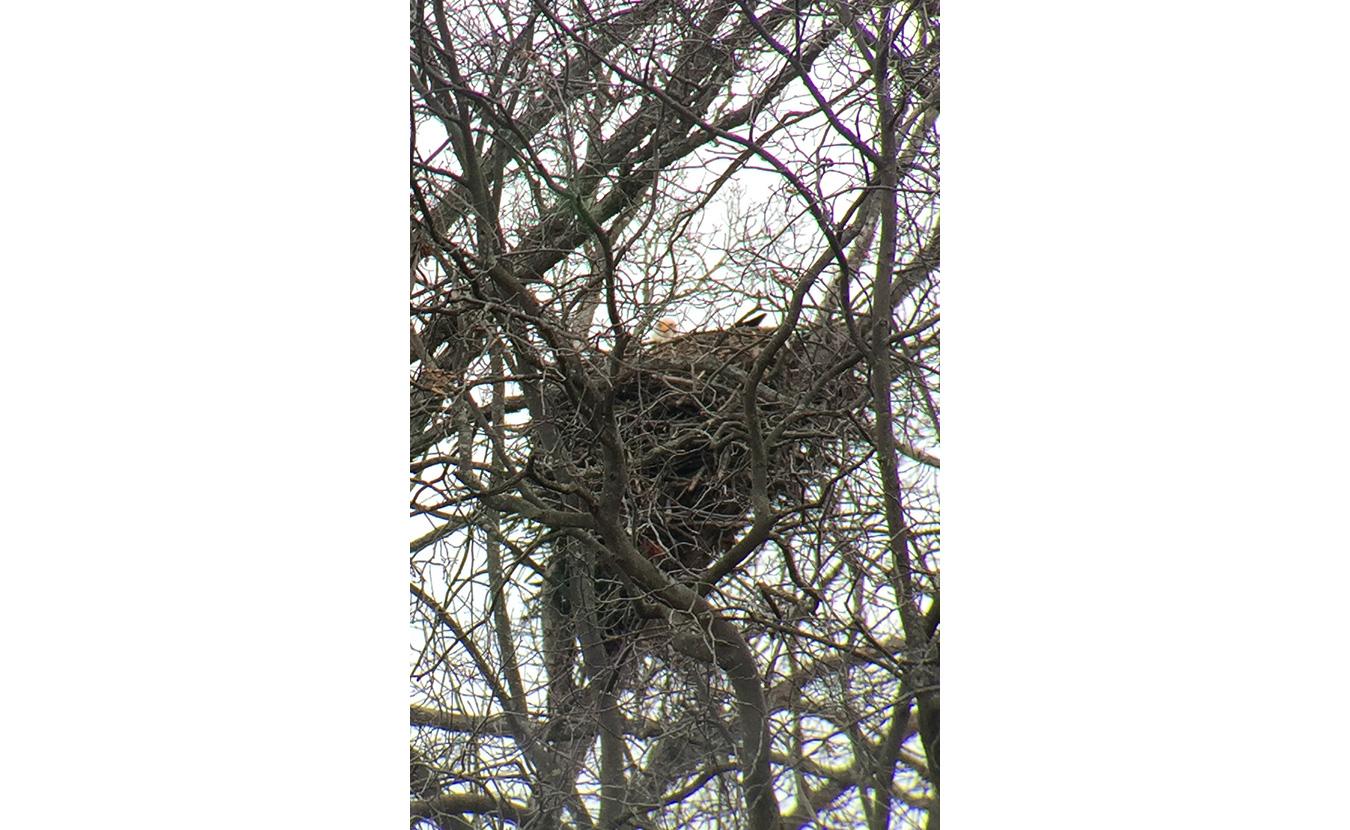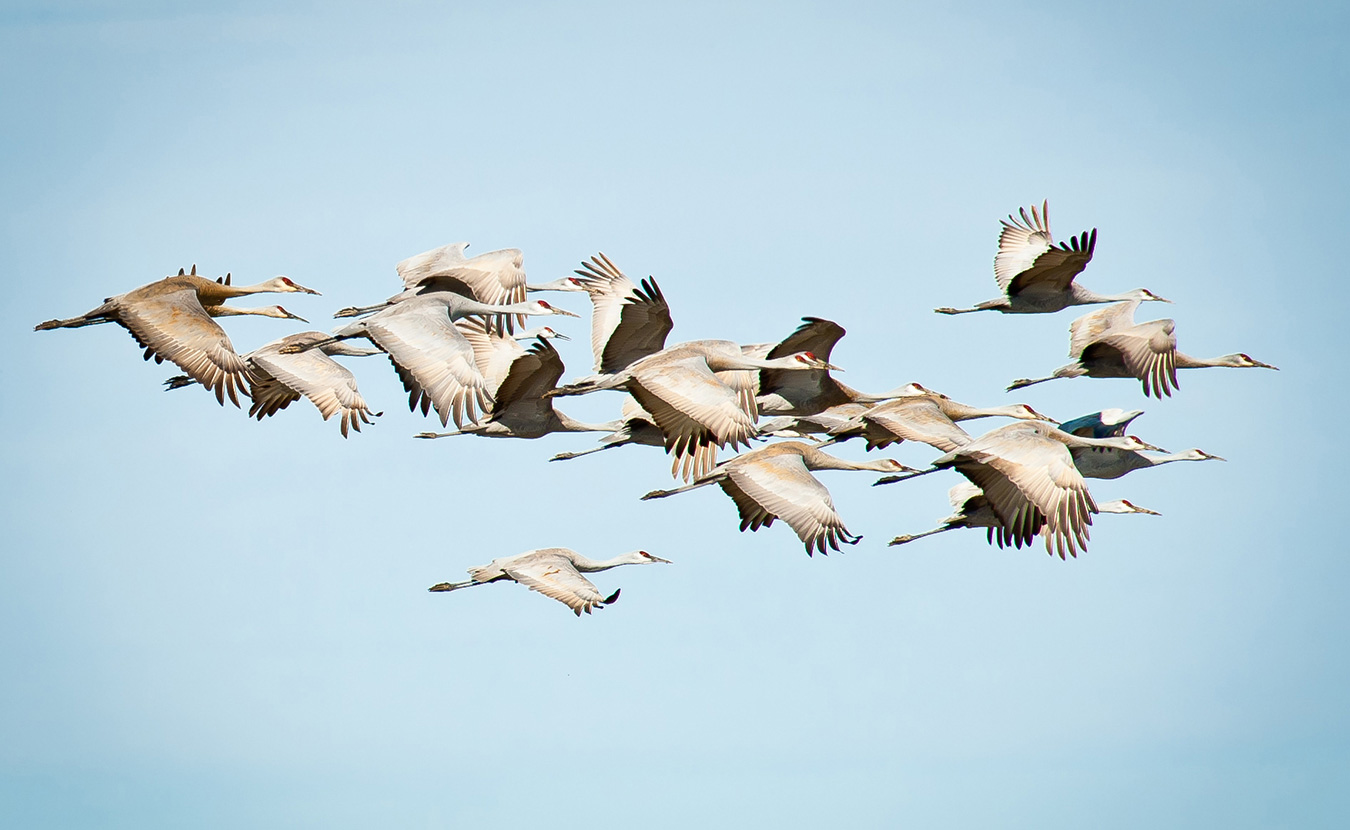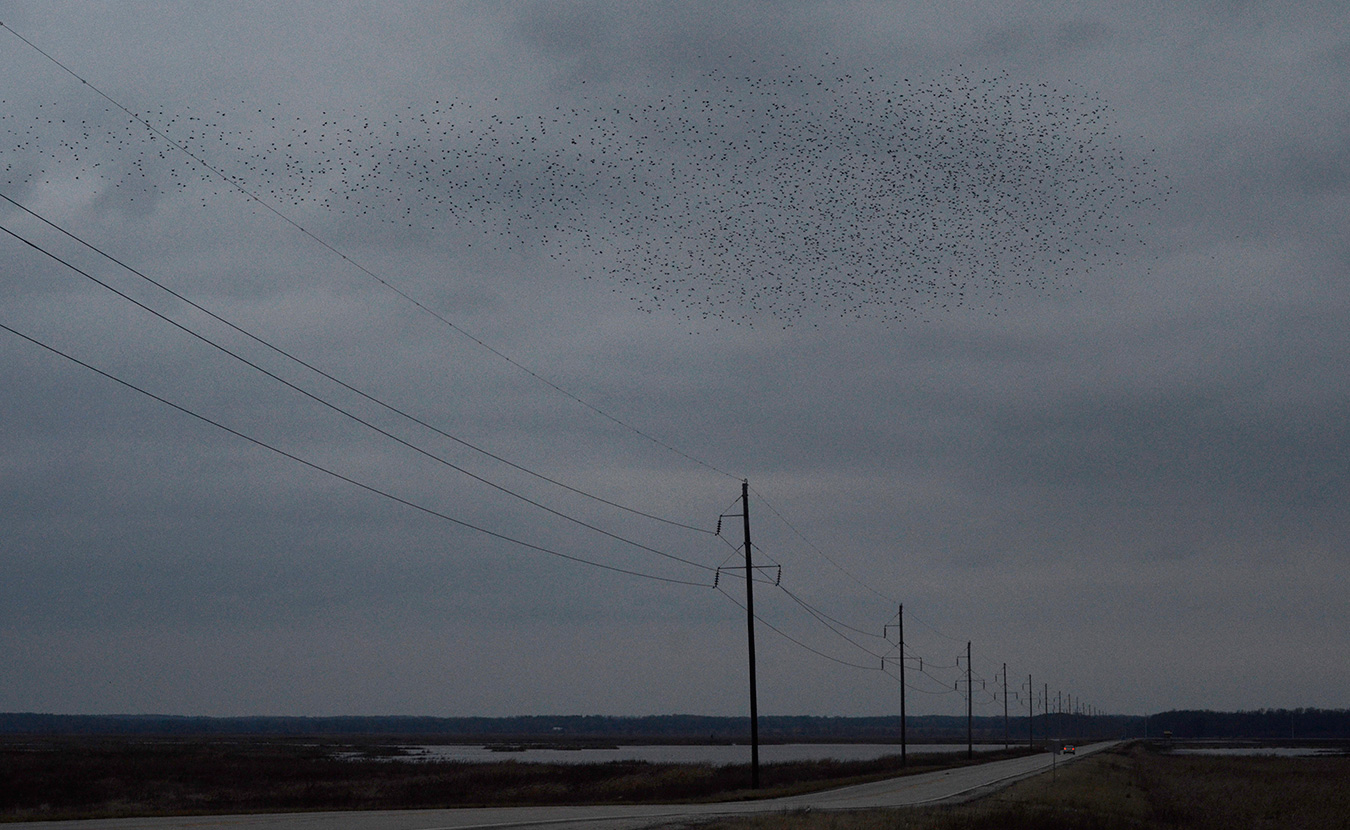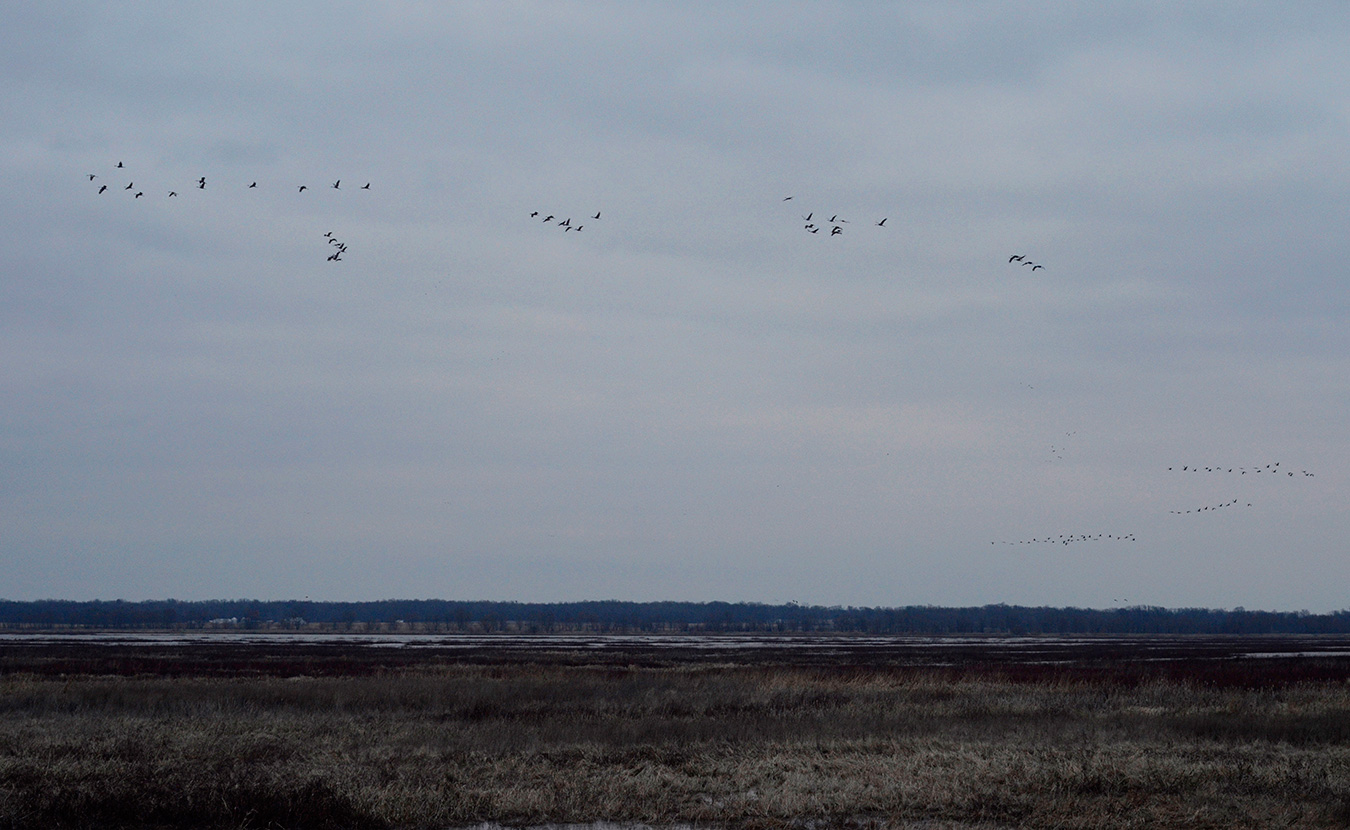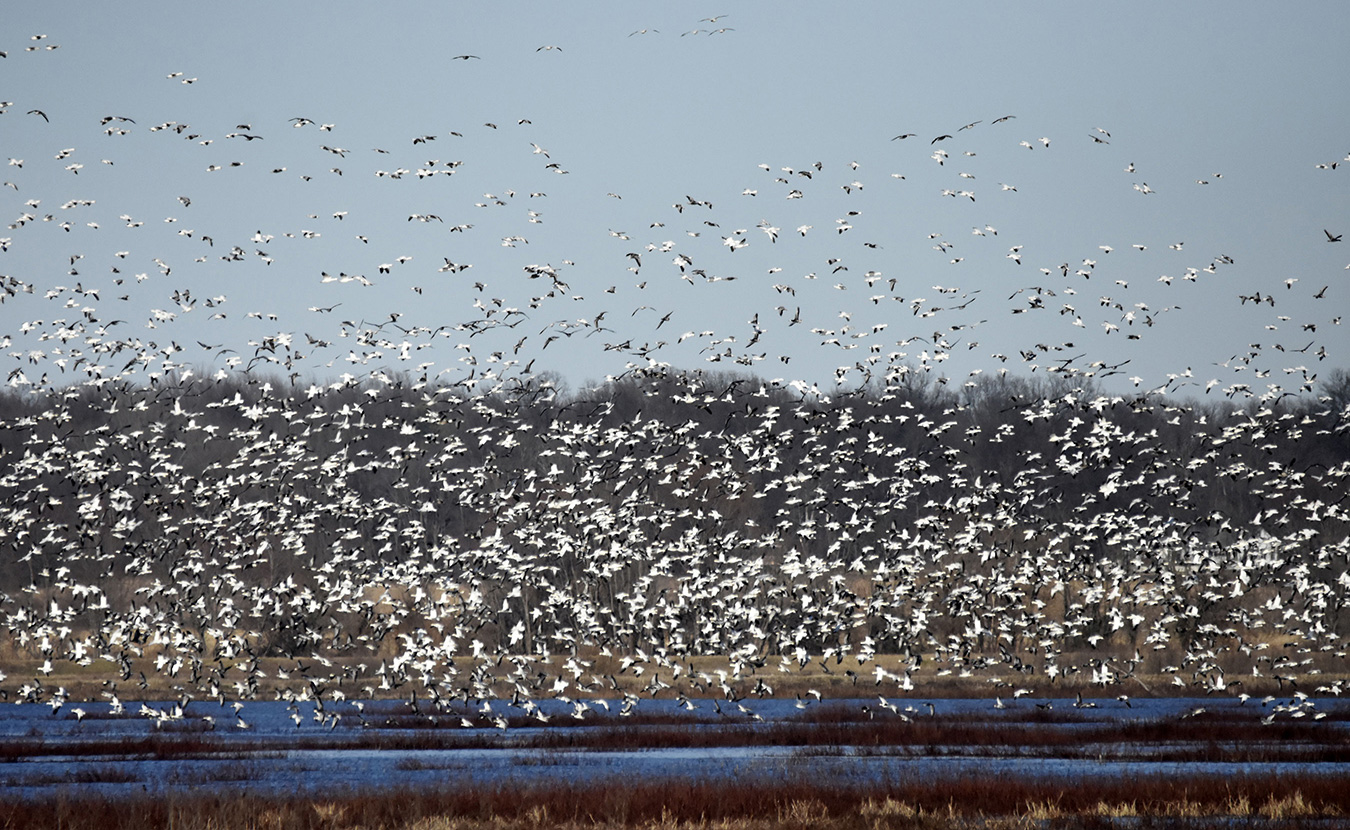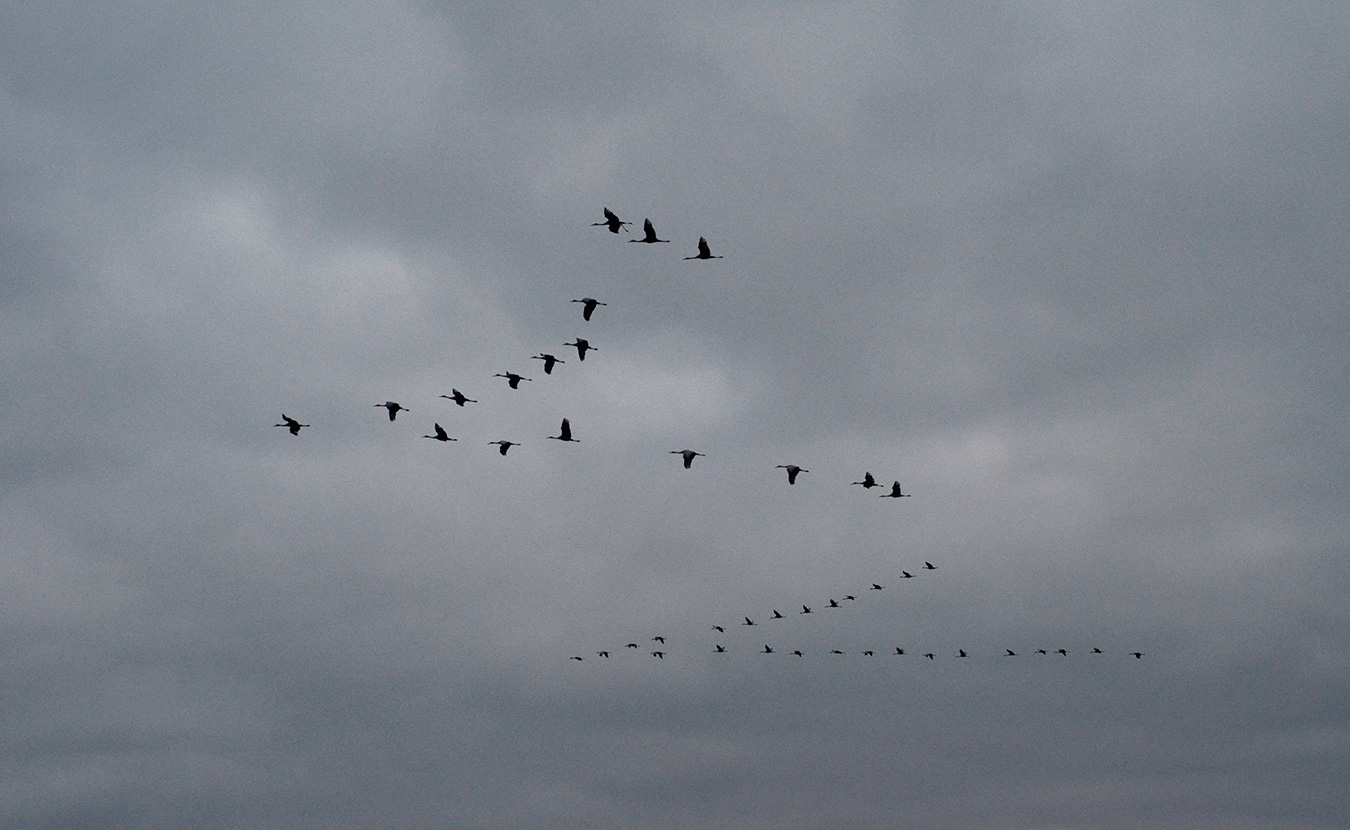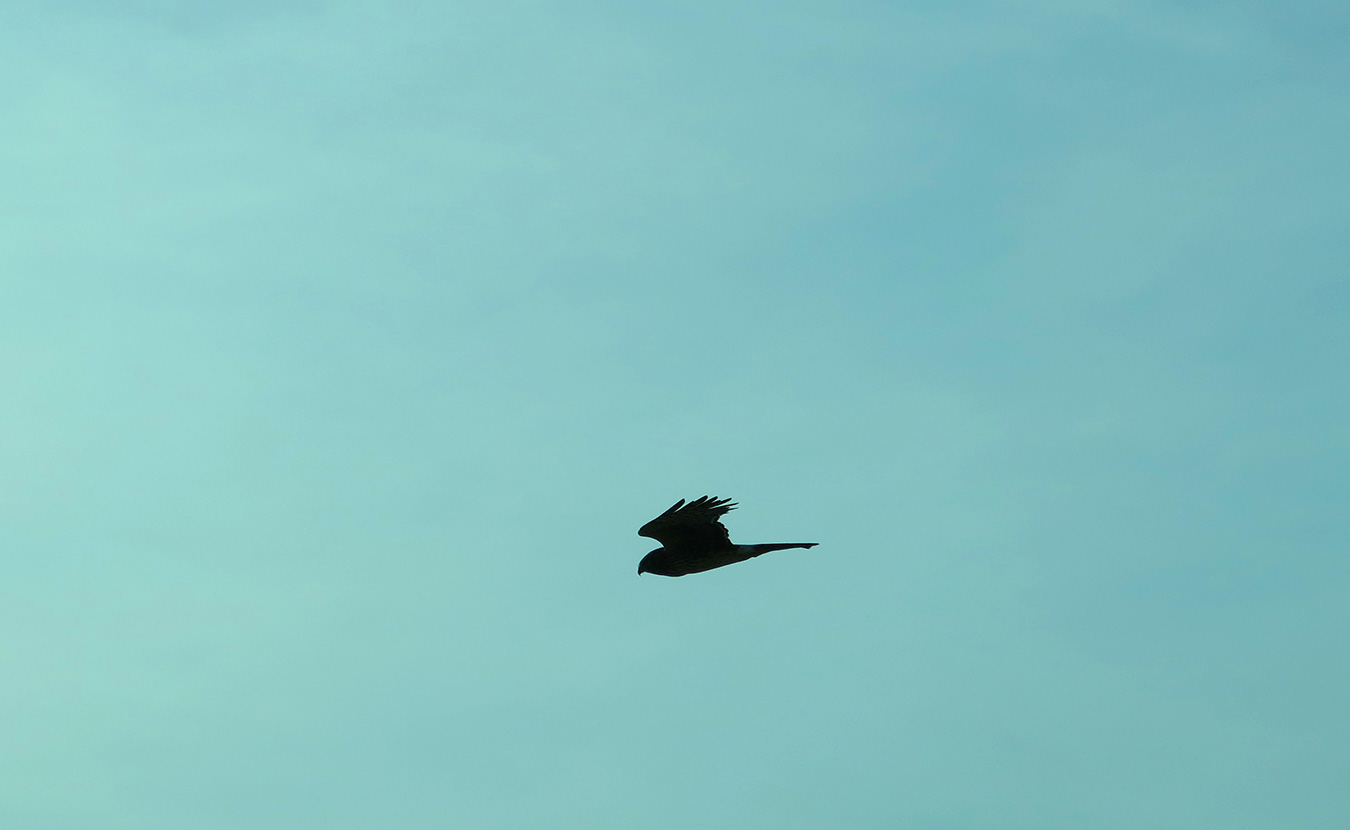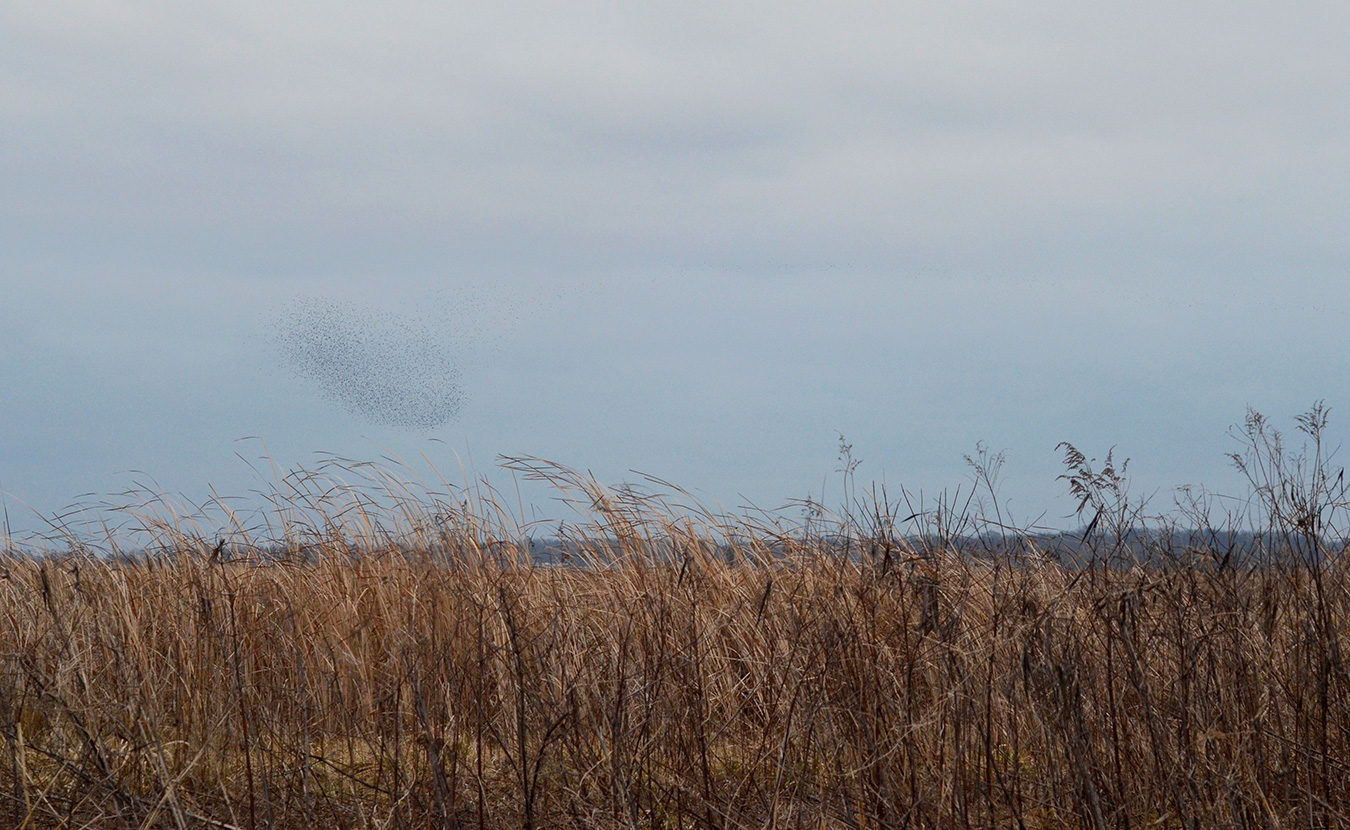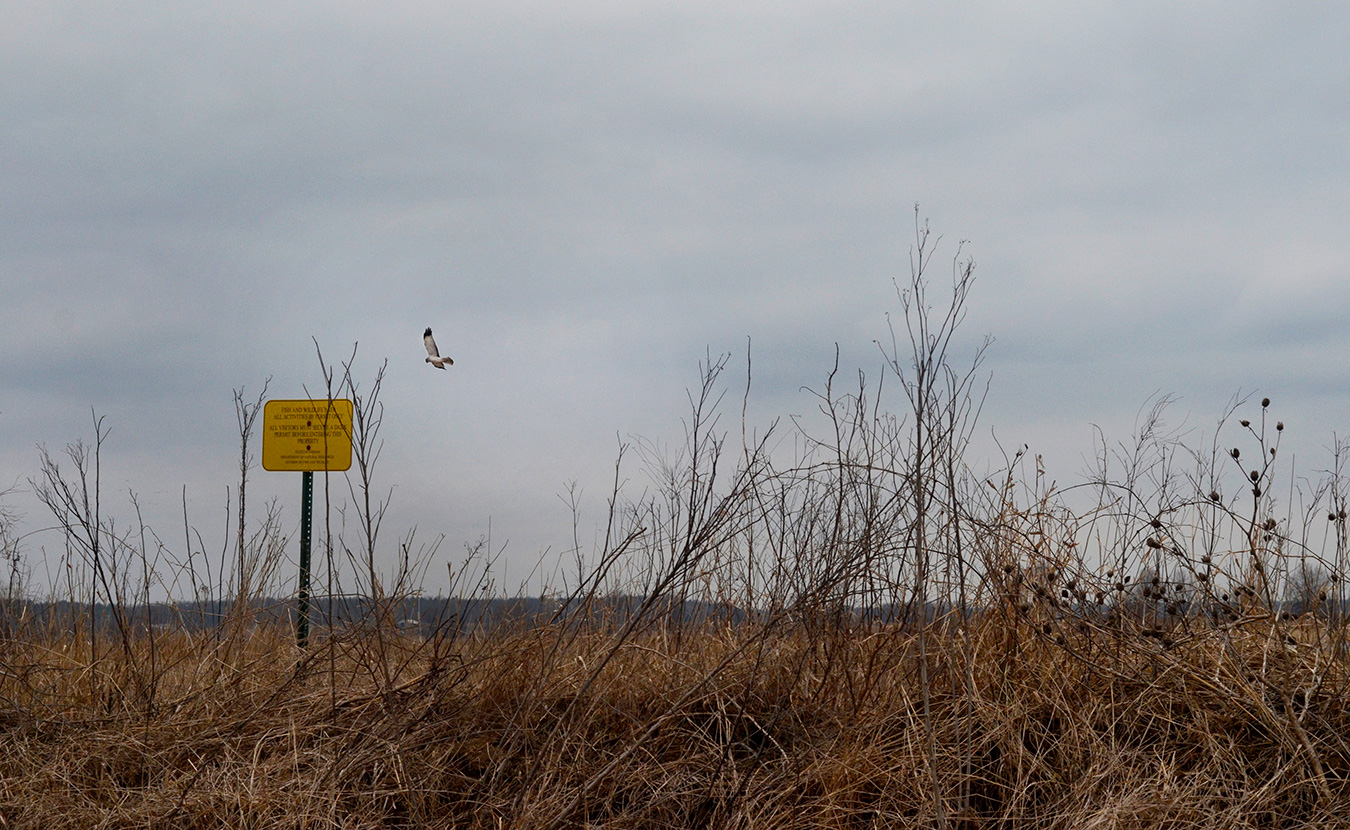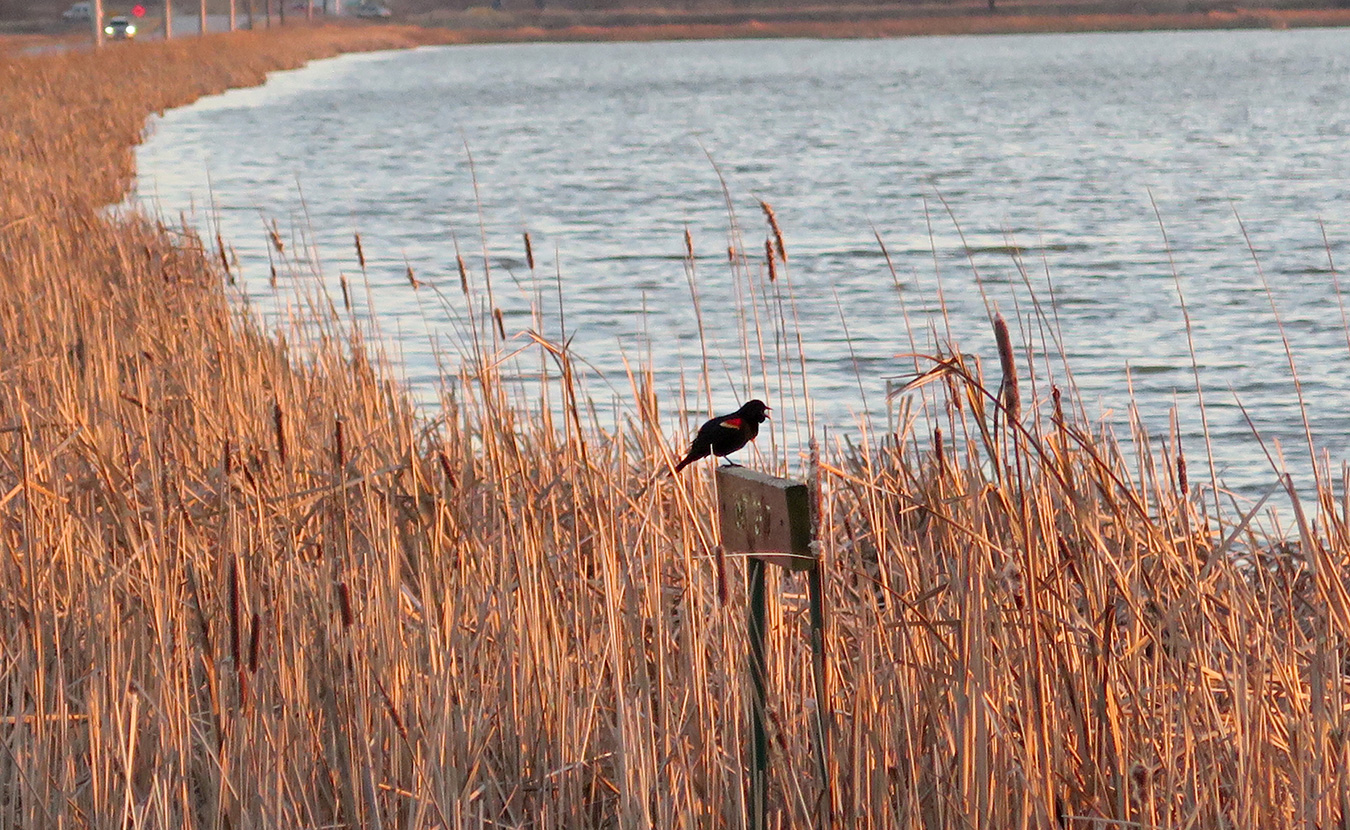For the uninitiated and uninformed, spotting and identifying rare birds can be as futile and frustrating as hunting for buried treasure without a map. Different species can look almost identical from a distance, giving trouble to untrained eyes in distinguishing hawks from falcons, eagles from vultures, or cranes from geese.
Having a knowledgeable guide or companion, though, can make all the difference. An experienced birder will often know when a particular species of bird is nearby — even before it can be seen — just from the sounds it makes. They know a bird’s behaviors, flight patterns, how and where it prefers to perch and eat, and any number of characteristics depending on the conditions of the environment or the time of day.
Year-round, bird lovers from all over the region travel to the wetlands of Greene County to find gems in the lush natural habitat of Goose Pond Fish and Wildlife Area. The treasure hunt culminates this weekend at the 7th Annual Marsh Madness Sandhill Crane Festival at Goose Pond, just south of Linton.
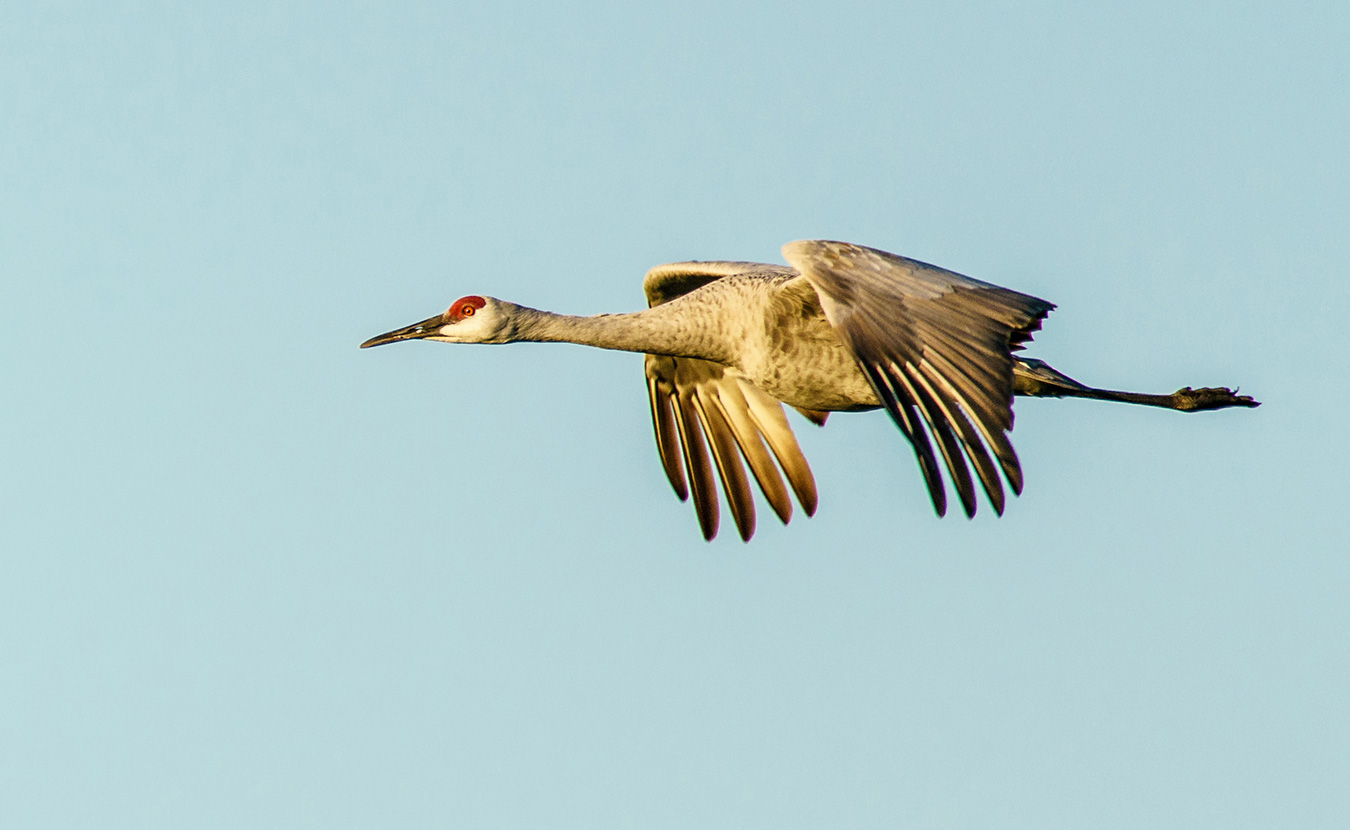
Sandhill cranes pick a place to spend the evening together after separating each day while feeding in the surrounding fields. | Photo by Thomas Marriage
The festival coincides with the arrival of tens of thousands of sandhill cranes, waterfowl, and various other birds that stop at the wetland area during their northern migration. For a sneak peek, Limestone Post visited the nearly 9000-acre Goose Pond and surrounding areas with birding expert David Rupp, owner of IndiGo Birding Nature Tours.
Rupp found not only thousands of sandhill cranes but also three of the remaining 600 endangered whooping cranes. He said up to 20 “whoopers” have gathered at one time at Goose Pond. But Rupp encourages people to keep this critical information in mind from the Indiana Department of Natural Resources:
Anyone who encounters a whooping crane in the wild should give them the respect and distance they need. Do not approach birds on foot within 200 yards; try to remain in your vehicle; do not approach in a vehicle within 100 yards. Also, please remain concealed and do not speak loudly enough that the birds can hear you. Finally, do not trespass on private property in an attempt to view whooping cranes.

Whooping cranes, the tallest birds in North America at a height of five feet, were on the brink of extinction in the 1940s, and only about 600 are alive today. These three were spotted at Goose Pond in February. | Photo by Lynae Sowinski
A few miles east of Goose Pond, Rupp showed us an eagle’s nest, high in a stand of trees. By observing the eagle’s behavior in the nest, Rupp supposed it was protecting its eggs — a welcome development after the wind had blown an earlier nest out of the trees nearby.
Near Bee Hunter Marsh — a wetland area adjacent to Goose Pond and named after the Native American and pioneer residents who hunted clover honey in earlier times — Rupp caught sight of a line of pelicans flying east. They might have gone unnoticed or been misidentified as geese or another common bird by someone else. But through binoculars, the pelican’s distinctive features could be seen — long, yellow bills and large throat pouches.
At Goose Pond, Rupp spotted a pair of short-eared owls, which are designated as endangered in Indiana. They could easily have been mistaken for hawks, falcons, harriers, or other common birds of prey, especially in the faint light of evening when they typically hunt. But Rupp knew that short-eared owls generally come out at dusk, fly low to the ground, often in pairs, and “chatter” with each other in flight — all behaviors that this pair displayed.

Short-eared owls can be spotted at dusk as they hunt for small rodents in the fields. The endangered bird can be difficult to recognize — look for their flat faces and listen for their “chatter.” | Photo by Martha Fox
These are just some of the sights on display this weekend and throughout the month. Marsh Madness festivities kick off on Friday, March 4, with a banquet, a keynote speaker, and a live auction. A full day of events continues on Saturday with an arts and crafts fair, live displays of reptiles and birds of prey, bus tours, self-guided tours, presentations, an owl pellet dissection session, and storytelling by author Dark Rain Thom.
If you can’t make it this weekend, the pond holds treasures any time of year. But take an expert along, if possible. It makes a difference in knowing where to look and knowing what you see when you find it.
For more information about Marsh Madness, go to the Friends of Goose Pond website or visit its Facebook page. WTIU’s documentary on Goose Pond, “Goose Pond: The Story of a Wetland and Its Neighbors,” gives a thorough history of the area and will be shown all day Saturday at the East Cabin in Humphreys Park in Linton.


